
 |
||||
 ,
,  , Title
, Title
Publicly Available Telnet Browsers
A number of browsers are publicly available which can be accessed using
the telnet protocol. These include:
An example of the use of the telnet browser at the Radcliffe Science Library at Oxford University is illustrated in Figure 3-1.
telnet rsl.ox.ac.uk
Radcliffe Science Library & Bodleian Library WWW Server (p1 of 6)
RADCLIFFE SCIENCE LIBRARY & BODLEIAN LIBRARY WWW SERVER
UNIVERSITY OF OXFORD
[IMAGE]
Welcome! At present this WWW server is still feeling its way. This
page is intended primarily as a starting point for Oxford users
wishing to explore Internet services and information sources. From
this home page you can also access some of our Local WWW applications
which are for the most part still under development. For newcomers to
the Web, one good introduction is Entering the World-Wide-Web: A Guide
to Cyberspace by Kevin Hughes. Another is CERN's WWW FAQ (list of
Frequently Asked Questions).
Apologies to our regular Lynx users. We have phased out the old Lynx
opening page and you will now commence with this one. If you would
like to voice your opinions or your feelings, please feel free to use
the comments form below.
________________________________________________________________
-- press space for more, use arrow keys to move, '?' for help, 'q' to quit
Figure 3-1 The Client At Radcliffe Science Library.It should be noted that the organisations running these publicly available clients do not guarantee to provide the service on a long term basis.
Email Readers
For users who do not have full Internet connectivity it is possible to
retrieve files from WWW using electronic mail.
To use the service at the email address webmail@www.ucc.ie send the message GO url where url is the URL of the file you require. Note that, the turnaround time of this server seems to average about 1 week and this server only handles http urls (e.g. no FTP, etc.)
To use the service at the email address
agora@w3.mail.org
send the message send url to the address.
Text-Based Browsers
The browser illustrated in Figure 3-1 is a text-based browser (which is
sometimes referred to as a command-line browser). Text-based clients run on a
text-based operating system environment (e.g. DOS rather than Microsoft
Windows, or Unix rather than X Windows). Command line clients place less
demands on the local computer system, but do not provide the ease-of-use or
range of functionality provided by graphical clients.
Lynx
The most widely-used text-based browser is probably Lynx. Lynx was
developed at the University of Kansas, originally for Unix. An example of the
Unix implementation is illustrated in Figure 3-1.
Lynx has been ported to the MS DOS environment. DosLynx, as the implementation is known, will run on a PC with 512 K of RAM, running MS DOS 3 or later. It provides access to the World-Wide Web from an entry level PC which has the appropriate networking capability. DosLynx is illustrated in Figure 3-2.
Availability
The Lynx browser software is available at the URL
ftp://ftp2.cc.ukans.edu/pub/WWW/
In the UK it is also available at the URL
ftp://src.doc.ic.ac.uk/packages/WWW/lynx
The DosLynx software is available at the URL ftp://ftp2.cc.ukans.edu/pub/WWW/DosLynx/
Details of the system requirements for DosLynx are available at the URL ftp://ftp2.cc.ukans.edu/pub/WWW/DosLynx/readme.htm A Listserv mailing list exists at the address DosLynx-Dev@ukanaix.cc.ukans.edu for the distribution of DosLynx related information, updates and development discussions. To subscribe send an email request to listserv@ukanaix.cc.ukans.edu to be added to the list. All new releases will be announced on this list.
NCSA Browsers
The NCSA Mosaic browser is available for the X Windows, Microsoft
Windows and Apple Macintosh environments.
NCSA Mosaic For X
Although it was not the first graphics browser, NCSA Mosaic For X helped
to popularise the Web. At the time of writing version 2.4 is available,
although a beta version of 2.5 is also available (which includes support for a
number of new features including hierarchical hotlists).
NCSA Mosaic For Windows and the Macintosh
If NCSA Mosaic For X helped to popularise the Web, NCSA Mosaic For
Windows and for the Macintosh made it available to a much larger number of
people.
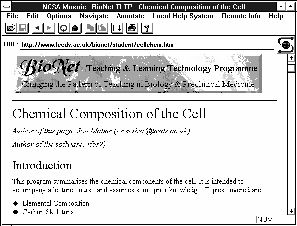
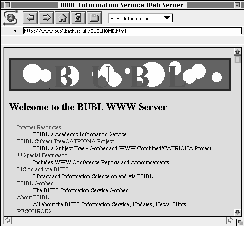
Figure 3-4 NCSA Mosaic For Windows and the Macintosh.
Availability
The NCSA Mosaic browser software for the X, Microsoft Windows and
Apple Macintosh platforms is available at the URL
ftp://ftp.ncsa.uiuc.edu/pub/Web/
In the UK it is available at the URL
ftp://src.doc.ic.ac.uk/packages/WWW/Mosaic/
Further information about NCSA Mosaic For Windows is available at the URL http://www.ncsa.uiuc.edu/SDG/Software/WinMosaic/HomePage.html Further information about NCSA Mosaic For the Macintosh is available at the URL http://www.ncsa.uiuc.edu/SDG/Software/MacMosaic/ Further information about NCSA Mosaic For X is available at the URL http://www.ncsa.uiuc.edu/SDG/Software/XMosaic/
Cello Browser
Cello was one of the first WWW browsers to be developed for the
Microsoft Windows environment. It was written by Thomas R Bruce of the Legal
Information Institute, Cornell University.
Availability
The Cello browser software for Microsoft Windows is available at
the URL
ftp://ftp.law.cornell.edu/pub/LII/Cello/
EINet Browsers
EINet have developed the WinWeb and MacWeb browsers for the PC and Apple
Macintosh platforms.
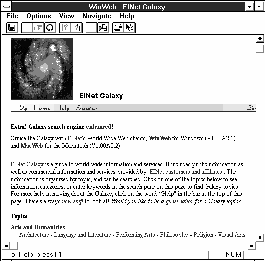

Figure 3-6 The WinWeb and MacWeb Browsers.
Availability
The EINet browsers software for the X, Microsoft Windows and
Apple Macintosh environments are available at the URL
ftp://ftp.einet.net/einet/
Netscape Browsers
Netscape Communications Corporation (MCOM) was set up by Jim Clark,
founder of Silicon Graphics. MCOM recruited the developers of NCSA Mosaic to
develop a WWW browser. A beta release of Netscape was released in October
1994. It generated a tremendous amount of interest, because of its speed and
functionality. However it also caused concern, since it included extensions to
the HTML standard which had not been part of the HTML standardisation
process.

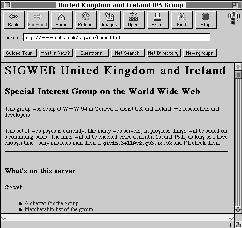
Figure 3-7 The Netscape Browser for Windows and the Macintosh.
Availability
The Netscape browser for the X, Microsoft Windows and Apple
Macintosh environments is available at the URL
ftp://ftp.mcom.com/
In the UK
it is available at the URL
ftp://src.doc.ic.ac.uk/packages/WWW/Netscape/
Further information is available from the URL
http://home.mcom.com/home/welcome.html
Air Mosaic Browsers
Air Mosaic is another commercial browser which is based on the NCSA
Mosaic source code.
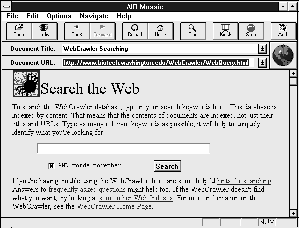
Figure 3-8 The Air Mosaic Browser For Windows.
Availability
An evaluation copy of the Air Mosaic browser software for the X,
Microsoft Windows and Apple Macintosh environments is available at the URL
ftp://ftp.spry.com/demo/
Further information is available at the URL
http://www.spry.com/
GWHIS Browsers
GWHIS is a commercial WWW browser marketed by Quadralay. GWHIS
(Global-Wide Help and Information System) consists of a WWW browser, an
application program interface (API) for integrating GWHIS into applications and
a search engine.

Figure 3-9 The GWIS Browser For X Windows.
Availability
An evaluation copy of the GWHIS browser software for the X,
Microsoft Windows and Apple Macintosh environments is available at the URL
ftp://ftp.quadralay.com/pub/gwhis Further information is available at the URL
http://www.quadralay.com/
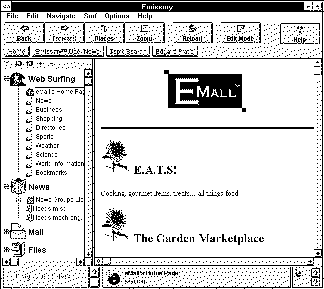
Figure 3-10 The Emissary Browser
Microsoft's Internet Explorer will be available for the Windows 95 platform.
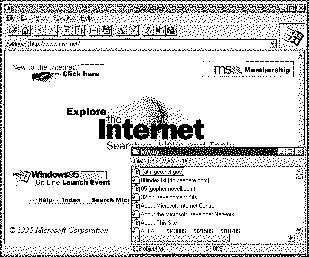
Figure 3-11 The Internet Explorer Browser.
Future Developments
A browser known as Arena is currently being developed which will handle
HTML 3. HTML 3 is a new version of HTML which contains a number of facilities
which are not available in the current version (HTML 2) including table
handling and mathematical formulae.
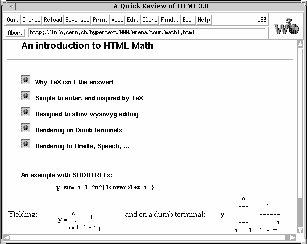
Figure 3-12 The Arena Browser.
Availability
Arena is currently a beta program. It can be obtained from the URL
ftp://ftp.w3o.org/
In the UK it is available at the URL
ftp://src.doc.ic.ac.uk/packages/cern/arena/
HotJava
The HotJava browser (developed by Sun) represents a new generation of
browser technology. The HotJava browser is capable of downloading and
executing programs written using an object-oriented language called Java, as
well as rendering HTML documents.

Figure 3-13 The HotJava Browser.
Browser Validation
A validation suite for testing the functionality of browsers is being
developed. Further information is available at the URL
http://www.w3.org/hypertext/WWW/Test/
Figure 3-14 illustrates a browser validation service which is available at the URL http://www.uark.edu/~wrg/
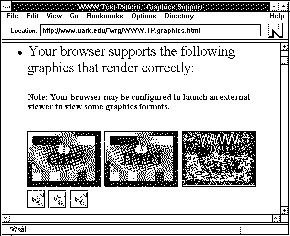
Figure 3-14 A Browser Validation Service.
Further Information
A list of browsers is available at the URL
http://www.w3.org/hypertext/WWW/Clients.html
Another list, which includes a brief summary of known bugs,XC is available at the URL http://www.hotwired.com/browsers.html
A third list is available at the URL http://www.charm.net/~web/Vlib/Users/Clients.html
A comparison of browsers is available at the URL http://www.osf.org/~kiniry/projects/web/browser_comparison.html
A browser tuneup for figuring out the particular quirks and oddities of browsers and may be useful for developers and consultants is available at the URL http://www.eit.com/goodies/tuneup/
A review of browsers is available at the URL
http://www.cnet.com/Central/Features/Browser/
Conclusions
Which is the best browser? There is no longer a simple answer to this.
The growth in the number of browsers, the different licensing arrangements and
different areas they address is making it difficult to adopt an institutional
policy on choosing a browser. At the time of writing the Netscape browser
looks very attractive. However it was developed primarily to address the needs
of commercial users, many of whom requested greater control over the appearance
of HTML pages in order to reflect a corporate identity. Will Netscape,
however, be as quick to support mathematical equations, which will be of
interest to most academic institutes? Will it be the best browser for
providing control over external applications - an area which is likely to be of
interest to academics who wish to develop distributed teaching materials?
Perhaps the only conclusion to be made at this point is that academic institutions should avoid being locked in to a particular browser.
 ,
,  , Title
, Title
Graphics Multimedia Virtual Environments Visualisation Contents